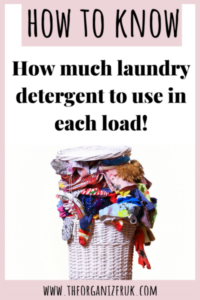Cleaning
How To Quickly Know How Much Detergent To Use For Each Load!
It can be hit and miss as to how much laundry detergent to use for each load of washing you toss in your washing machine.
- What’s the difference between powdered and liquid forms of detergent?
- What is bio and non-bio?
- How do you know how much detergent to use per load?
- Does a front loader use more or less detergent than a top load washer?
This post will help answer a plethora of different washing detergent questions you might have.
What is the difference between bio and non-bio?
Non bio means no enzymes.
Biological washing powers use enzymes to break down the grease and stains in your laundry.
Non-bio means there are no enzymes, which means that it is better to use when washing clothes for people with sensitive skin or allergies.
What’s the difference between liquid detergents and powder detergents?
Most powder laundry detergents, apart from the colour variants contain bleach.
- White garments will stay brighter when washed with powder detergents.
- Coloured garments will fade when washed with powder detergents.
How to keep whites white.
- Never be tempted to put white clothes in with lights.
- Whites should be washed with other whites only.
- Whites should be washed with a powder laundry detergent containing bleach.
- The powder should be dosed straight into the powder drawer.
- to keep your whites mega bright, treat any stains first, then add a white booster to the powder drawer.
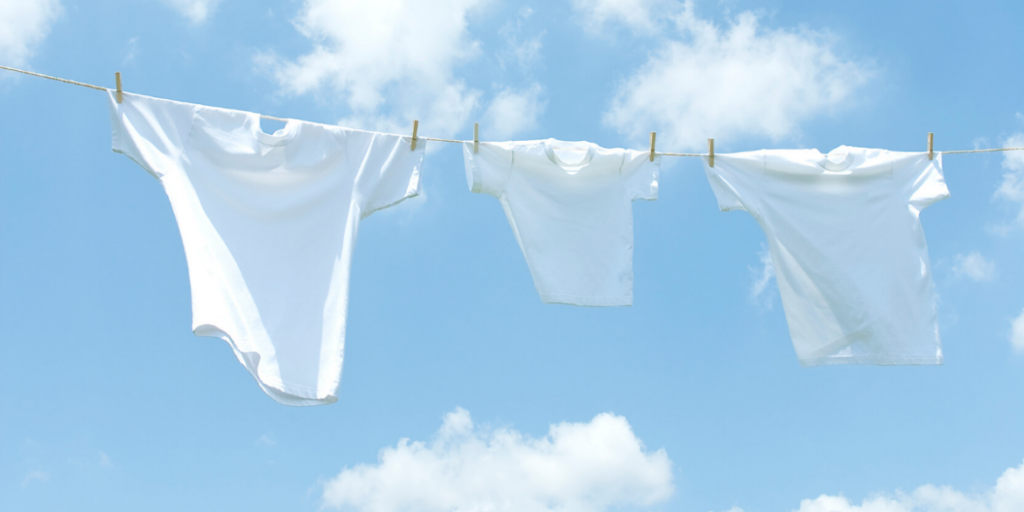
How to stop colours from fading.
Nobody wants their favourite jumper to go all dull and grimy, so how can we stop our colours from fading?
- Most gels, liquid laundry detergent, liquitabs and colour ranges of products do not contain bleach so they are better for washing coloureds as they will remain vibrant and bright.
- Separate light coloureds from dark colours to avoid dyes bleeding into the lighter clothes.
- Always wash reds together to keep them nice and bright.
How dirty are your clothes?
Dirt comes in all shapes and sizes here’s some examples that you may not have realized were transferring to your clothes with every wear!

Body soiling
Body soiling accounts for approximately 70% of the dirt on your clothing. This can come in the form of:
Skin. The human body will produce one billion skin flakes a day, imagine how much of that is sitting inside your clothes!
grease. The average human produces approximately 40g of grease every day and most of it transfers straight to our clothes!
Sweat. The average adult produces 1 litre of sweat a day. Sweat is made up of 1% salt, so that equates to approximately 10 g of salt going into your clothes and bedsheets!
Bodily fluids. Urine dribbles, Menstrual stains, faecal smears, they could all potentially be happily nestling in your underwear!
External dirt
Outside dirt accounts for 30 % of the grime found on your clothing, this dirt can come in the form of:
Dribbles: Stains from eating and cooking food at home and dining out account for approx. 2g per day of the dirt found on your clothes.
Sports: Grass stains and mud make up approx. 4g per day of your daily dirt.
Products: Makeup, lotions, sunscreen, deodorants all add up to approx. 2g of grime per day!
Outside stains: Smoke, dirt, dust, pollution, pollen etc. accounts for approx. 4g per day!
How to know how much detergent to use for each load.
To know how much detergent to use in each load we need to consider:
How large your drum is:
- Check the front of your washing machine to determine the size of your drum, refer to your user manual or check the efficiency certificate which will have it stated inside.
- If you have a 4-5k drum you can use a standard dose of detergent per load
- The bigger your drum is, i.e. 6kg +, you should be using a larger dose of detergent.
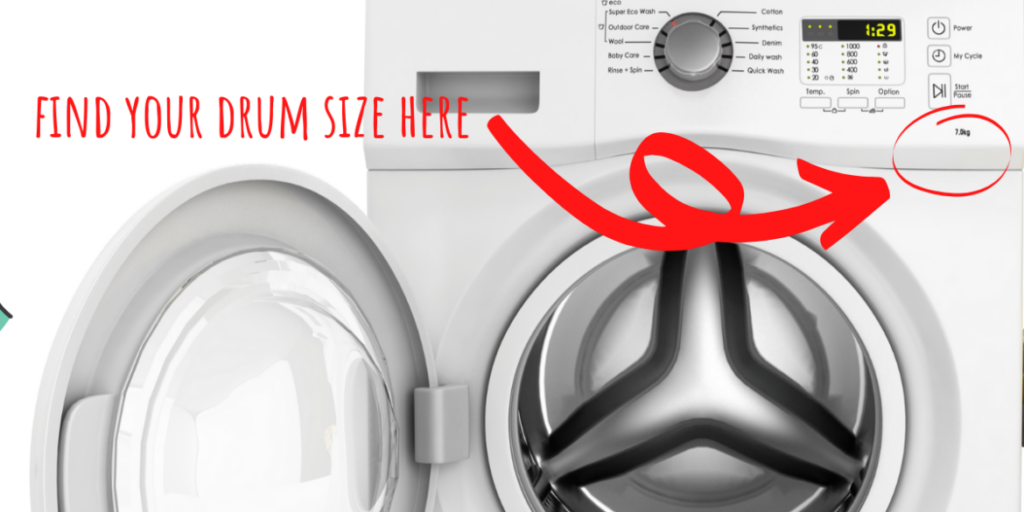
How dirty your clothes are: see above for a guide.
How hard your water is:
- Hard water contains a higher mineral content than soft water, therefore, if you live in an area with hard water you will need to use slightly more detergent to soften it. You can contact your local water provider to check if you live in a hard-water area. Or follow this link.
- If you live in a soft water area you will need to use slightly less detergent for each load.
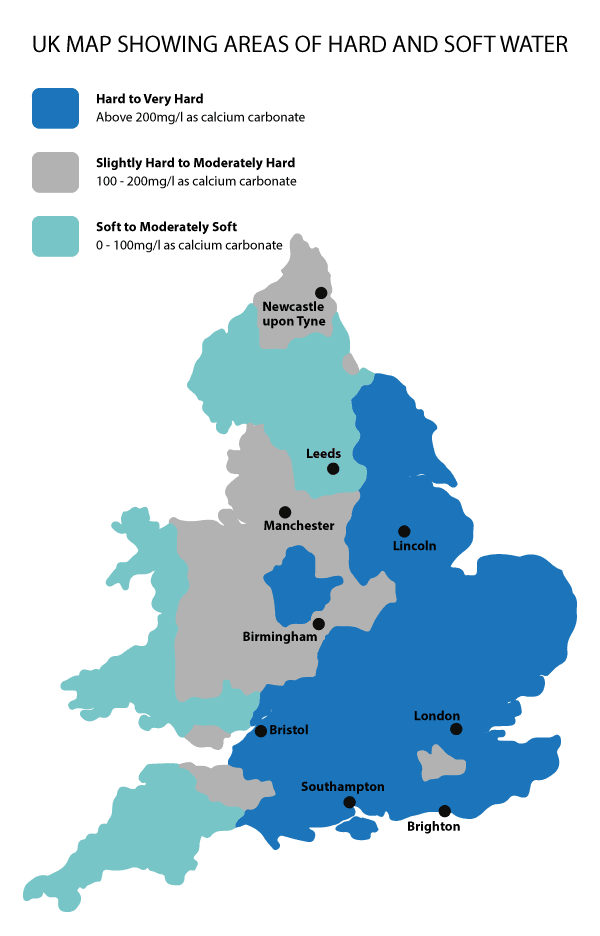
Image courtesy of https://www.finerfilters.co.uk ,to find out more information about the hardness of the water in your area be sure to check out their website!
In a nutshell:
- Follow the guides on the side of your detergent box or bottle and adjust accordingly for the amount of dirt on your clothes, water hardness and the size of your drum!
- Doses may vary for efficiency washers so please refer to your manual.
How big should your load be?
- Less is more! Think of it this way, the more clothes you stuff into your drum the more they will soak up the water that is needed to agitate your clothes and get them clean.
- If your clothes have soaked up all the water the detergent will have nothing to dissolve into and there will be no water to clean your clothes!
- To prevent overloading your machine try to leave about a hand’s width space between the top of your laundry and the top of your washing machine.
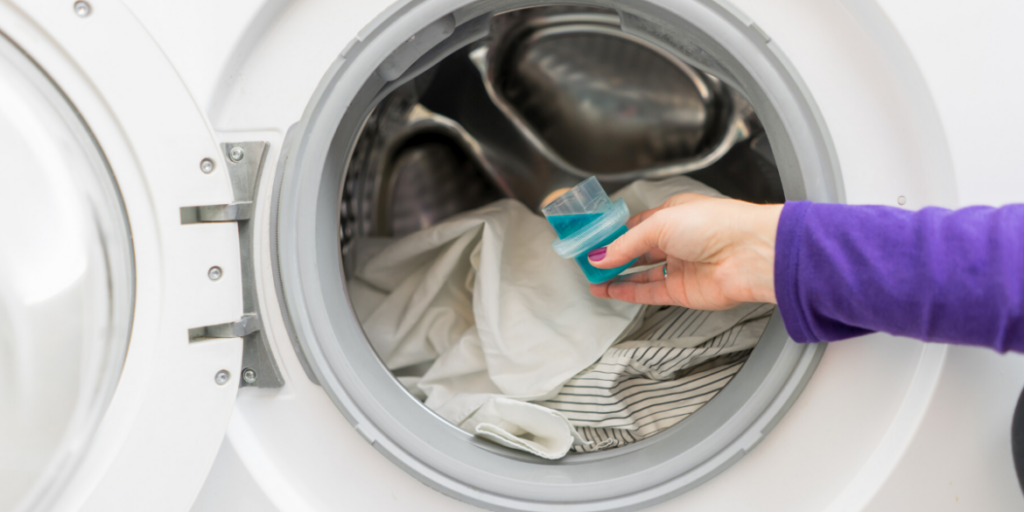
Which wash cycle should you use?
- Washing at 40 degrees means that the washing gets more agitation and is better for cleaning and getting stains out: i.e., cotton cycle
- Washing below 40 degrees gives less agitation and is better for fabric care and delicate washes.
When should you use a quick wash?
- If you have heavily soiled clothes use a regular wash but if you have lightly soiled clothes you can wash them on the quick wash cycle with a regular amount of powder.
- You can save up to 50% energy with the great results on lightly soiled clothes in less than an hour, so it’s definitely worth considering swapping a few loads to quick washes per week.
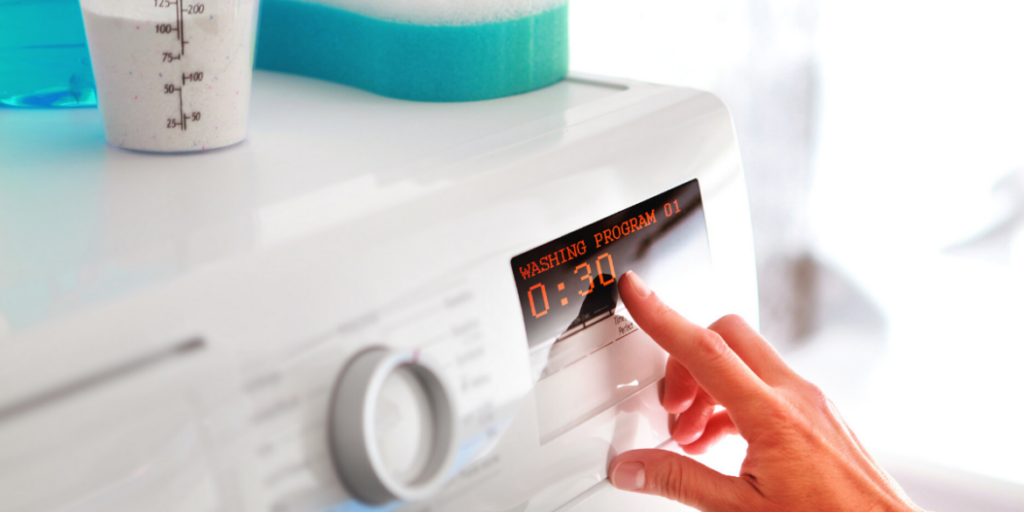
Should I use a fabric softener?
Fabric softeners will:
- Reduce wrinkles
- Make ironing easier
- Reduce drying time
- Prevent static
However, it is thought that fabric softeners encourage the build-up of mold in your washing machine due to the content of animal fat. To find out how to get rid of mold in your washing machine read this fabulous post!
Do not use more than the recommended amount of fabric softener in your washing machine. If you fill past the MAX mark it will trigger the fabric softener to be dispensed immediately instead of at the last cycle.
Always refer to the washing machines user manual to check the efficiency.
Frequently asked questions
Use one teaspoon of soap flakes or gentle liquid detergent to avoid getting the water too soapy or over saturated.
The concentration of high-efficiency laundry detergent is usually as follows;
2x = 2 teaspoons
4x = 1 teaspoon
10x = 1/4 of a teaspoon
per 12lb load of laundry
You will usually find that coloured clothes may have a white residue and may need to be washed again. You will not see the residue on whites, however, they will still need to be washed again to avoid any skin irritations.
Yes, it does! The 3 compartments are used for three different things!
1 is for the pre-wash powder or liquid for extra dirty clothes
11 is for the normal washing detergent.
Max = The third compartment usually marked with max is for the fabric softener or vinegar if you prefer.
Use a gentle detergent preferably one which is recommended for wool such as this one
Read how to make that load of laundry disappear faster with my top laundry tips!
